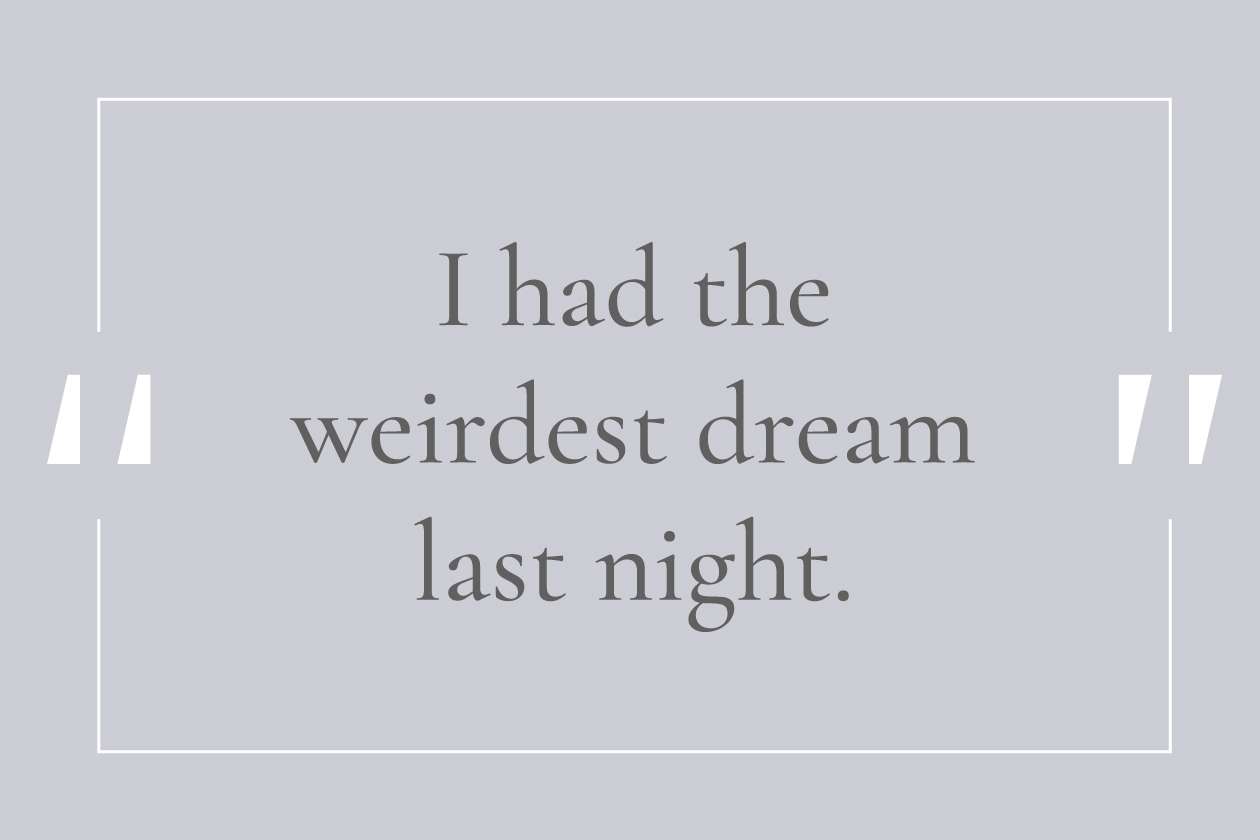
“I had the weirdest dream last night.” How often have we said that, or heard it from a friend or colleague? Unless we’re consulting an analyst or psychotherapist who has been trained in dream work, the conversation usually stops there. Dream narratives and symbols are often so cryptic, how do we approach them in order to understand more about our waking lives? In this article I would like to give you a few tools to investigate your own dream life.
To work with our dreams, we must first remember them before they slip away. Most people write down their dreams or at least take a few notes as soon as they wake up, but for me the easiest method is to record a voice memo.
1. When recording a dream by voice memo or in writing, use present tense. “I am wandering through a dark hallway” rather than “I was wandering…” This helps us stay in the dream as a living experience. Eventually, transfer the dream into a journal or Word document.
2. Include details that seem bizarre or insignificant and resist the temptation to edit in a way that makes the dream more linear or logical.
3. Describe details in the dream as vividly as possible. For example, if there is a ball, what kind is it? What color is it? How big is it? Is there anything unusual about it?
4. List personal associations to settings, people, things, colors – anything from the dream that feels significant, unusual or interesting. What immediately springs to mind? After your initial reaction, describe how these associations relate to your present life. How do they relate to your past? To your childhood?
5. In the process of association, when feelings arise, sit with them without trying to explain or understand them. Just be with them, like sitting quietly with a friend, without the need to fill the silence. And what about your body? Notice your breath as you go into the feeling. Notice bodily sensations. Are you smiling? Are you wincing? Tense, relaxed? What’s happening in your stomach? Simply be curious and see where your body and feelings lead you. Emotional and somatic content are more important than logical conclusions.
6. When some unexpected figure or situation from your past arises, be curious. If a kid in your 3rd grade class shows up, someone you haven’t thought of in years, remember how you felt in his/her presence. What did he/she represent for you then? Is there anything about the feeling that resonates with a current outer situation? Current inner situation?
7. Remember to think symbolically rather than literally. For example, sex can mean connection to an idea or a part of yourself. So an unnerving dream about sex with a friend or colleague can encourage us to explore what that person represents for us – is it a sense of adventure, stability, strength, vitality, openness? Death can mean transformation of an idea or part of yourself – the first step toward renewal and rebirth of a relationship or aspect of your life.
8. There are four levels of interpretation, and a symbol or character in a dream can represent one or all four levels.
Subjective – represents an inner, psychological process
Objective – represents an outer reality
Cultural – represents cultural influence
Archetypal – represents humanity’s shared psychic history
9. Take the most important symbols, images, or people through the four levels of interpretation. Often, we find a truthful resonance on all four levels simultaneously. Remember, this is not an either/or process. Continuing with the kid from 3rd grade, let’s imagine that kid bullied you or made you feel left out.
Subjective – am I harshly criticizing myself?
Objective – is there a person or situation in my life that makes me feel the same way?
Cultural – do I feel out of place based on some cultural ideal or prejudice?
Archetypal – what figures from stories, books, myths, or religious texts were outsiders?
And while there are many scientific theories about why we dream, the research of Rosalind Cartwright, PhD agrees with many ideas of Jungian psychology regarding the importance of dreams for emotional processing and identity. In her book The Twenty-Four Hour Mind: The Role of Sleep and Dreaming in Our Emotional Lives she writes, “Dreams are not about prosaic themes, not about reading, writing, and arithmetic, but about emotion. I propose that when some disturbing waking experience is reactivated in sleep and carried forward into REM, where it is matched by similarity in feeling to earlier memories, a network of older associations is stimulated and is displayed as a sequence of compound images that we experience as dreams. This melding of new and old memory fragments modifies the network of emotional self-defining memories, and thus updates the organizational picture we hold of ‘who I am and what is good for me and what is not.’
Establishing a relationship with our dreams can be like having a conversation with a friend – the more we listen and pay close attention with a non-judgmental attitude, the more the conversation will open up. In my own experience, as well as many of my clients, simply the intention to listen to the dream world encourages more dreams to enter our consciousness. For further reading, I would suggest two books by Jungian analysts – Inner Work by Robert A. Johnson and A Little Course in Dreams by Robert Bosnak.